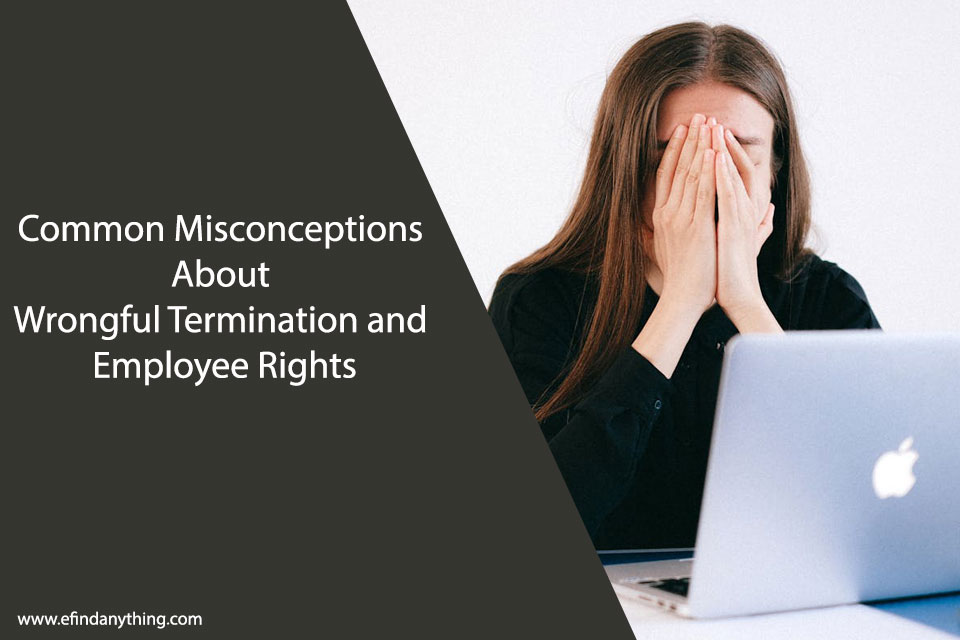
Think you know everything about wrongful termination?
Most employees have absolutely no clue about their actual rights when it comes to getting fired. They think every unfair dismissal equals a wrongful termination lawsuit — but that’s not even close to the truth.
Here’s the problem:
Millions of workers believe they understand wrongful termination law, but they’re operating on dangerous myths and misconceptions. This confusion costs them real money and legal protection when they need it most.
What you’ll discover:
- The “Unfair” vs “Wrongful” Confusion
- What Actually Makes Termination “Wrongful”
- The “Right to Work” Myth
- Documentation Misconceptions
The “Unfair” vs “Wrongful” Confusion
Want to know the #1 misconception that trips up employees?
They think “unfair” and “wrongful” mean the same thing when it comes to termination. That’s completely wrong.
Your boss can fire you for almost any reason they want — even stupid ones. They can terminate you because they don’t like your personality, because you posted something on social media, or simply because it’s Tuesday.
Here’s why this matters:
Most states operate under “at-will employment” laws. This means employers can terminate workers without cause, as long as the reason isn’t specifically illegal under federal or state law.
The truth is that 43% of wrongful termination plaintiffs receive compensation, but only when their case involves actual legal violations — not just unfair treatment.
But when your termination crosses into illegal territory, that’s when Sweeney Merrigan Personal Injury Lawyers and other experienced wrongful termination attorneys can help you fight back and recover damages.
What Actually Makes Termination “Wrongful”
So what separates legal (but unfair) firing from actual wrongful termination?
Wrongful termination happens when you’re fired for:
- Discrimination based on protected characteristics (race, gender, age, religion, disability, pregnancy)
- Retaliation for reporting harassment, safety violations, or filing workers’ compensation claims
- Refusing to break the law or violate public policy
- Taking legally protected leave (FMLA, medical leave)
- Whistleblowing on illegal company activities
Notice what’s NOT on that list? Personality conflicts, poor management decisions, favoritism, or general workplace bullying (unless it’s based on protected characteristics).
The “Right to Work” Myth
Here’s another misconception that confuses employees…
Many people think “right to work” laws protect them from unfair firing. Wrong again.
Right to work laws have nothing to do with termination protection. They actually limit union power by allowing workers to opt out of union membership and dues.
What you’re probably thinking of is “just cause” protection, which only exists in Montana or through specific employment contracts. Most workers don’t have this protection.
Documentation Misconceptions
“I don’t need documentation because I know what happened.”
That’s a costly mistake.
Employment law cases live and die on evidence. Your memory of events isn’t enough to win a wrongful termination case. You need:
- Written communications (emails, texts, memos)
- Witness statements from coworkers
- Performance reviews and disciplinary records
- Company policies and procedures
- Medical documentation (for disability/FMLA cases)
Cases with both witness testimony and written evidence have a 63% success rate compared to just 28% for witness testimony alone.
The bottom line? Start documenting everything the moment you suspect problems at work.
The “I Can Handle This Myself” Trap
Think you can navigate wrongful termination law without professional help?
The statistics tell a different story. Workers with lawyers receive compensation 64% of the time with average settlements of $48,800. Workers without lawyers? Only 30% receive compensation averaging $19,200.
Here’s what most people don’t realize:
Employment law is incredibly complex. Federal laws, state laws, company policies, and deadlines all interact in ways that can affect your case. Missing a filing deadline or failing to follow proper procedures could risk your rights. In such situations, consulting an experienced attorney, such as those at Vanguard Lawyers, can help navigate the process and ensure important steps aren’t overlooked.
The EEOC Filing Misconception
“I don’t need to file with the EEOC first.”
Wrong — and this mistake kills cases.
For most discrimination and retaliation claims, you must file a charge with the Equal Employment Opportunity Commission before you can sue in court. You typically have just 180 to 300 days from the discriminatory act to file.
Miss this deadline, and you’re out of luck — regardless of how strong your case might be.
The good news? The EEOC received 88,531 discrimination charges in fiscal year 2024, and they secured nearly $700 million for workers. The system works when you use it correctly.
Settlement Expectations vs Reality
“I’ll get millions if I win my case.”
Most wrongful termination settlements are much more modest than people expect. The typical range is $5,000 to $80,000, though some cases reach six figures depending on factors like:
- Your salary and benefits
- Length of employment
- Strength of evidence
- Employer’s conduct
- Economic damages (lost wages, benefits)
- Emotional distress
Don’t let unrealistic expectations cloud your judgment. A solid case with reasonable damages is better than chasing a lottery ticket.
The “My Company Will Protect Me” Myth
“HR is on my side.”
No, they’re not.
Human Resources exists to protect the company from legal liability — not to protect individual employees. They might help resolve workplace issues, but when push comes to shove, they’re looking out for corporate interests.
This doesn’t mean HR is evil, but understand their role and limitations. Document your interactions with HR and don’t rely on them as your only form of protection.
Timing Misconceptions
“I have plenty of time to figure this out.”
Time is your enemy in wrongful termination cases.
Beyond EEOC deadlines, evidence disappears, witnesses forget details, and your economic damages pile up. The longer you wait:
- The harder it becomes to prove your case
- The more skeptical people become about your claims
- The less likely you are to recover full damages
Start exploring your options immediately if you suspect wrongful termination.
The “At-Will” Absolute Myth
“My state is at-will, so I have no rights.”
Even in at-will employment states, employers can’t fire you for illegal reasons. At-will employment has exceptions, and those exceptions form the foundation of wrongful termination law.
Key exceptions include:
- Public policy violations
- Discrimination laws
- Retaliation protection
- Contractual obligations
- Implied employment agreements
Understanding these exceptions could mean the difference between walking away empty-handed and recovering significant compensation.
Your Next Steps Matter
Think you might have a wrongful termination case?
Don’t make decisions based on myths and misconceptions. Employment law is too complex and the stakes are too high for guesswork.
Here’s what you should do:
- Document everything related to your termination
- Gather evidence while it’s still available
- Research filing deadlines for your situation
- Consult with an experienced employment attorney
- Consider your financial situation and damages
Remember, most employment attorneys offer free consultations and work on contingency fees for strong cases. You’ve got nothing to lose by getting professional advice.
Beat the System
Wrongful termination law isn’t as simple as “unfair equals illegal.” The system has specific rules, deadlines, and requirements that trip up workers who try to go it alone.
But when you understand your actual rights — not the myths and misconceptions floating around — you can make informed decisions about your situation. Whether that means fighting back through the legal system or moving on with your career, knowledge gives you power.
The truth is simple: Most wrongful termination misconceptions exist because employment law is complicated and most people never need to learn it… until they do.
Don’t let myths and misunderstandings cost you the compensation and justice you deserve.
